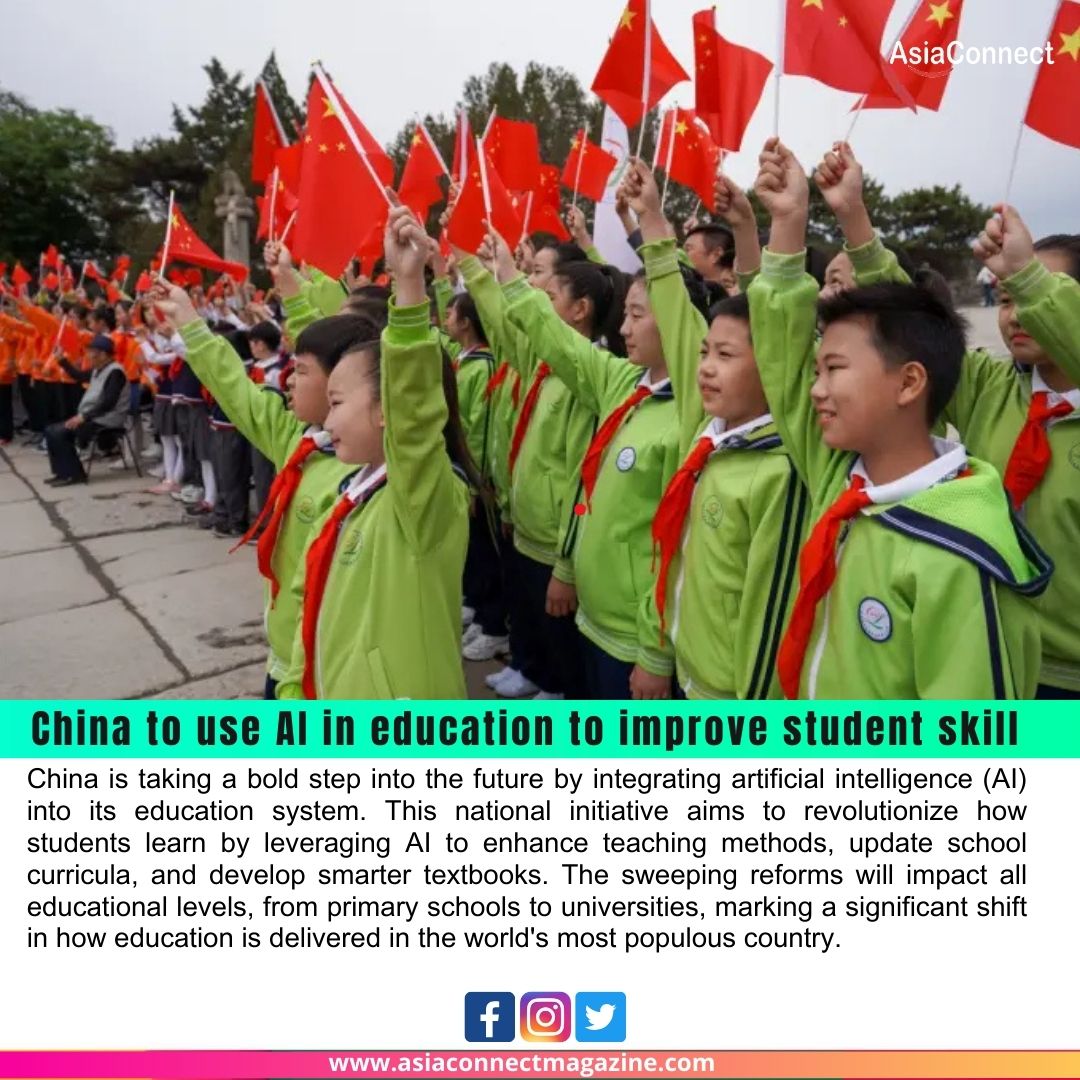China is taking a bold step into the future by integrating artificial intelligence (AI) into its education system. This national initiative aims to revolutionize how students learn by leveraging AI to enhance teaching methods, update school curricula, and develop smarter textbooks. The sweeping reforms will impact all educational levels, from primary schools to universities, marking a significant shift in how education is delivered in the world’s most populous country.
Transforming Teaching with AI
AI-powered tools are being introduced to support teachers in personalizing instruction and identifying learning gaps. Through real-time data analysis, AI can assess student performance, predict future challenges, and recommend tailored resources to help each learner succeed. Teachers will be able to use these insights to adapt lesson plans, making education more dynamic and responsive to individual needs.
Moreover, intelligent tutoring systems and AI chatbots will provide students with round-the-clock assistance. These technologies can answer questions, provide practice exercises, and give instant feedback, creating a more interactive and engaging learning experience.
Modernizing School Curricula
One of the central goals of China’s AI-driven educational reform is to align school curricula with the demands of a digital economy. Courses will increasingly focus on science, technology, engineering, and mathematics (STEM), with particular emphasis on coding, data literacy, and AI fundamentals. By nurturing these skills early, China hopes to prepare its students for high-tech careers and maintain its competitive edge in global innovation.
In addition to STEM, the curriculum reform will also incorporate critical thinking, creativity, and problem-solving—skills that are crucial for adapting to rapidly changing industries. These enhancements will not only benefit students academically but also equip them with the mindset and capabilities needed for lifelong learning.
Smarter Textbooks and Learning Materials
China’s education authorities are also working to develop AI-enhanced textbooks. These smart resources will feature interactive content, multimedia integration, and adaptive learning paths. Using AI algorithms, the textbooks can adjust the level of difficulty based on a student’s progress and learning style, ensuring a more personalized and efficient study experience.
These intelligent learning tools will also collect data on student usage and performance, allowing educators to continuously improve the materials based on real-world feedback.
A Model for the Future of Education
China’s AI initiative represents a comprehensive approach to educational reform that could serve as a model for other countries. By combining traditional teaching with cutting-edge technology, the country aims to create a more effective, inclusive, and future-ready education system.
As AI continues to evolve, its role in shaping global education systems will only grow. With its ambitious vision and large-scale implementation, China is positioning itself at the forefront of this transformation—investing in the next generation’s skills to drive future growth and innovation.





